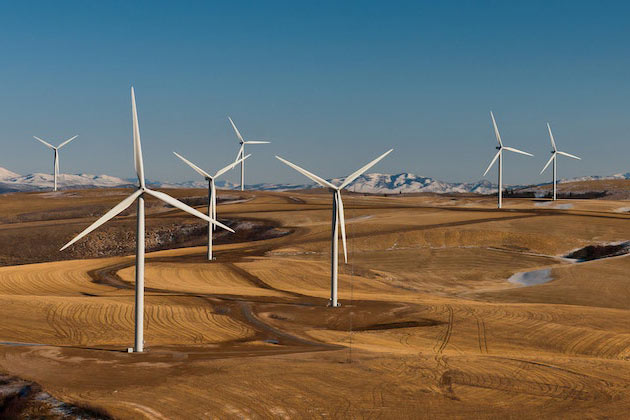
New Climate Federalism
The “new climate federalism” model proposes a framework for federal, state and local governments to work together to address climate change by utilizing the strengths of every level of government.
U.S. states and local governments have long been at the forefront of climate and clean energy policy, testing and validating new models while driving down U.S. greenhouse gas emissions. With renewed interest in climate action on Capitol Hill, federal policymakers must determine how to leverage the efforts of non-federal actors as they move forward with national policies and programs.
The task of decarbonizing the U.S. economy is too big for any one level of government to tackle alone, so each level of government — federal, state and local — must fully bring their strengths to the table. The “new climate federalism” model proposes a framework for federal, state and local governments to best use their strengths and collaborate on climate action.
States and local governments committed to climate action in support of the Paris Agreement now represent 68% of the nation’s GDP, 65% of its population and 51% of its GHG emissions. Many others continue to play a role in shaping U.S. emissions, adopting policies and programs that are opening up new investments in clean energy.
Our work with New Climate Federalism aims to advance this work in two ways:
1. Engagement
The magnitude of the climate challenge demands thoughtful consideration of the roles each level of government should play across the many areas where action is needed. In some areas, federal competence cannot easily be matched at the subnational level, suggesting the need for a strong federal role. In other areas, it is difficult to imagine the federal government taking the primary implementation role. Often, a collaborative approach that involves significant roles at the federal and subnational levels is optimal. It will be important for federal policy makers to ask the right questions and apply sound principles in the development of U.S. policies.
To help inform these decisions, WRI is convening state, local and federal leaders to develop a practical model for climate federalism, one that leverages the strengths of federal, state and local governments. The first phase of the Climate Federalism Dialogue focused on developing a framework for determining local, state and federal roles when acting to address the challenges of climate change. In the fall of 2020, the Dialogue released a Working Paper entitled “New Climate Federalism: Defining Federal, State, and Local Roles in a U.S. Policy Framework to Achieve Decarbonization.” The second phase of the Dialogue, jointly hosted by WRI and Georgetown Climate Center, applies the climate federalism principles developed in the first phase to focus on transportation decarbonization through infrastructure investment.
2. Analysis
WRI develops research and analysis to quantify the impact of policies adopted by state, local and federal governments, as well as actions taken by the private sector. This work leverages novel analytic tools, such as WRI’s ATHENA model, developed to ensure that these actions can be attributed and accounted for in national level assessments while avoiding double counting.
Our work includes support for the America’s Pledge initiative, an effort to aggregate, analyze and showcase non-national climate action in the United States, report on progress made toward the U.S. pledge under the Paris Agreement and develop roadmaps for business-level, city and state action in the United States.
Watch Commentary from State and Local Leaders


